Interview with Alan Newton, President of Janus Development Group
Share:
Linda Schreiber: This morning I'm visiting with Alan Newton, president of Janus Development Group, the manufacturer and marketer of the SpeechEasy device. Good morning, Alan. Alan Newton: Good morning. Linda: Alan, we've heard and read a lot lately about the SpeechEasy device. What is this device? A
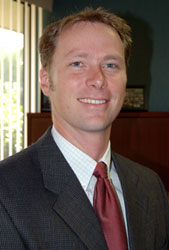 Linda Schreiber: This morning I'm visiting with Alan Newton, president of Janus Development Group, the manufacturer and marketer of the SpeechEasy device. Good morning, Alan.
Linda Schreiber: This morning I'm visiting with Alan Newton, president of Janus Development Group, the manufacturer and marketer of the SpeechEasy device. Good morning, Alan. Alan Newton: Good morning.
Linda: Alan, we've heard and read a lot lately about the SpeechEasy device. What is this device?
Alan: Aesthetically, the best comparison is a hearing aid. SpeechEasy looks like a hearing aid and uses some similar technology. The biggest difference, however, is in its purpose. SpeechEasy is not designed to amplify sound; rather, it's designed to modify sound. It incorporates a frequency pitch shift and a very slight time delay. All the sounds coming through the device are heard at either a higher or a lower pitch and with a very, very slight delayanywhere from 20 to upwards of 220 milliseconds in delay. What those two combined modifications do is to create what's called the choral effect. It has been shown that when people who stutter speak or sing in unison with someone else, they tend to become more fluent. So on a basic level, our device is simply attempting to emulate that effect. Users wear it in one ear and they hear their own voices at that pitch shift and that time delaywhich the brain then perceives as a different person talking along with them, thus creating the choral speech effect.
Linda: So the technique sounds similar to delayed auditory feedback but with a shorter time delay?
Alan: Exactly. It actually incorporates two aspectsdelayed auditory feedback and frequency altered feedback. The difference is how we're using the delayed auditory feedback. Historically it's been used to slow down the rate of speech for the speaker and to help them prolongate their speech. We use the SpeechEasy to produce the choral speech effect which results in two things: (1) since you don't have long time delays (we use short delays typically), it doesn't stretch the speech, and (2) their speech is natural sounding.
Linda: So the user wears the device in his or her ear?
Alan: Correct.
Linda: How noticeable is the device?
Alan: Well, that's perhaps the biggest benefit of the device. It is very, very smallvery inconspicuous. Typically users report that other people can't even see it when it's in their ear. We do have multiple sizes and models; the smallest being the completely in the canal model, which quite literally resides all the way down inside the ear canal. It would only be visible if you were standing beside the person and looking directly into his or her ear canal.
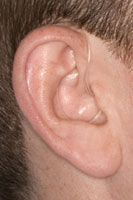
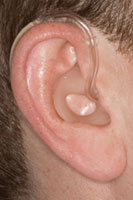
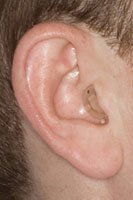
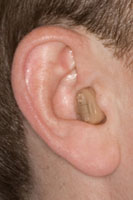
Linda: Is there an age requirement for wearing the device?
Alan: A great question. We don't have an age requirement per se, but we do advocate that the client be 8 years or olderfor a number of reasons. We leave the final judgment of age-appropriateness in the hands of the speech-language pathologist who's evaluating and dispensing the device. We do this for several reasonswe want to make sure the child has had a chance to try traditional therapy to see if that can help remediate their stuttering. We also want to make sure that the child's stuttering is not developmental. If a child is in a developmental phase and he or she is receiving good therapy, the odds are good that the child is going to either grow out of the stuttering over time or learn some techniques that will help cope with stuttering.
But by the ages of 8 or 10, when it is clearer that the stuttering is persistent, the device may be more appropriate. But again, with all of that said, we leave this in the hands of the speech-language pathologist who's evaluating and dispensing. There are a host of other variables and issues that should be taken into consideration, such as maturity issues, responsibility, and whether or not the child actually wants to wear the device.
Linda: I would guess a child's cognitive level would be a consideration too in being able to talk about his or her communication skills and difficulties.
Alan: Certainly. And in addition to cognitive levels, confidence issues and social interaction may need to be taken into consideration as well.
Linda: So are there other considerations an SLP would need to think about?
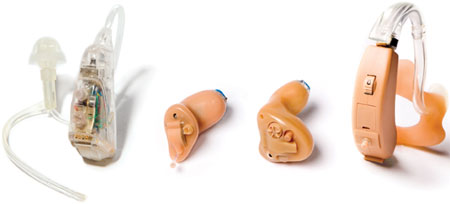
Alan: Great questionand that's actually something we've been trying to define over the last several years. That is, is there a criteria that makes one client a better candidate for the SpeechEasy device than another? Although there are no set rules for who will be successful, I can tell you that candidates most likely to be more successful will have had previous therapy and will know what success with fluency feels like. To be honest with you, we're finding that the biggest piece is motivation. The person who stutters has to want to actively use the device. They have to be willing to practice with it daily. They have to commit to wearing it consistently. It's the culmination of all those things.
Linda: Just now, you mentioned practice. Is there a sequence of lessons or training that clients advance through once they purchase the device?
Alan: When clients initially receive their device, they receive a lot of instruction from the speech-language pathologist who's dispensing and evaluating. A lot of that instruction involves care and maintenance, but there's also instruction on practice techniques and warm-up exercises they can dodaily regimens they need to follow. We also strongly advocate the use of additional therapy with the device. So, often the speech-language pathologist (SLP) will go through what those additional therapy exercises entail and how the client can best use them in conjunction with the device. However, it should be stated that the amount and intensity of follow-up will vary with each client who uses the device. Some people need more therapy and training while others may need minimal assistance.
Linda: You have mentioned that SLPs dispense the SpeechEasy. Do these individuals need training?
Alan: Yes, we train all of the speech-language pathologists who work with the SpeechEasy product. At present, we have over 140 SLPs across the United States. All 140 are ASHA-certified, state-licensed, and have been trained by us to dispense the product. Our training is fairly intensive; it covers about a day and a half. During that time we cover everything from the make up of stuttering, the make up of the device, how it was developed, the premise of how it works, to the entire evaluation system they will need to go through with the client. We also spend time going through some sales and marketing protocols.
Linda: I see on your website you have information on efficacy and research. What data have you you gathered to date?
Alan: The largest independent study that's underway right now is being done by Dr. Larry Molt at Auburn University in Alabama and it is to test the long-term effectiveness of the device. His goal is to study approximately 30 clients over the course of two years. At this time, he has about 7 or 8 clients that are at the two-year mark, and he's preparing to submit for publication towards the end of this year. We're hopeful that by next fall, we may see a publication of that study.
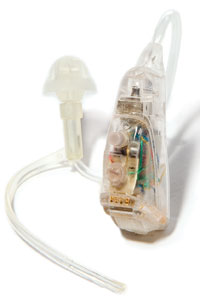
Alan: A second independent study that we've initiated is with Dr. Anne Foundas at Tulane University. Dr. Foundas is a neurologist whose prior work has involved research which examined the impact of delayed auditory feedback on the brain. She'll be working in conjunction with Dr. Ed Conture from Vanderbilt University and they will be doing similar work with SpeechEasy.
Linda: That's great; we'll watch for these studies to be published.
Linda: An important issue for everyone is affordability of the SpeechEasy. How costly is the
device?
Alan: We are acutely aware that cost is an issue, and have launched a number of programs to try and address it. The first has been to create a leasing program, which was just launched in August of this year. The leasing program is entirely funded, operated, and managed by Janus. We're offering a lease for the product which requires a very low down paymenttypically around $1200 to $1700with monthly payments over the course of 48 months. Towards the end of the lease, there's a very low purchase option for the client if he or she wants to buy the device at the end of that time. Otherwise, the client can choose to restart another lease with a new device which incorporates the latest technologies.
Linda: That's a great option.
Alan: The other pressing issue that we've been examining is insurance reimbursement.
Linda: Have you had any success with that?
Alan: Limited success at this time. What we're finding at the moment is that reimbursement varies case-by-case, mainly because stuttering is not currently classified as a medical disorder. It is classified as a psychological disorder. Since it is not seen as a medical disorder, our product is not going to be reimbursed as a medical device. So we are looking to the results of the current studies to not only show evidence that SpeechEasy is efficacious and works long-term, but also to help show that stuttering is a neurological and medical disorder. Another key initiative has been the assembly of a review panel, which will include a number of key, prominent speech-language pathologists and researchers in the U.S. The purpose of the panel will be to help us define and implement additional studies.
Alan: All of that said, there is another system that we have been very successful in getting reimbursement payment from and that is Vocational Rehabilitation (Voc Rehab; VR). Voc Rehab is typically a state and federally funded program. The program provides funding for any individual with a disability who can show that this product may help them attain better employment or perform better in his or her current job. Voc Rehab will typically pay for the SpeechEasy evaluation and the product, and at present they constitute about 35% of our sales.
Linda: That's a great tip.
Alan: We're always looking down the road for future developmentsfor other ways to address affordability.
Linda: I suppose some of your development costs will go down over time.
Alan: Yes, but we also reinvest back into our research and development (R & D) very
consistentlywhich is how we were able to create and launch the new Comfort Fit product that was released in August. We've taken dollars we've earned over the last three or four years, and reinvested a significant portion of that revenue back into R & D. The result is that we now have a product that's far superior, much more comfortable to wear, and hopefully addresses the key complaint of prior SpeechEasy users.
Linda: Alan, the SpeechEasy is a device speech-language pathologists ought to be aware of. If a reader is interested in more information, you have a dedicated website for SpeechEasy, correct?

Alan: We do, and it is simply www.SpeechEasy.com
Linda: And where can consumers get information about a representative in their area?
Alan: They can contact us directly:
- via phone, 877-4-fluency
- via email info@speecheasy.com
- via our website www.SpeechEasy.com
Linda: Alan, thanks for taking the time to tell us about the SpeechEasy today.